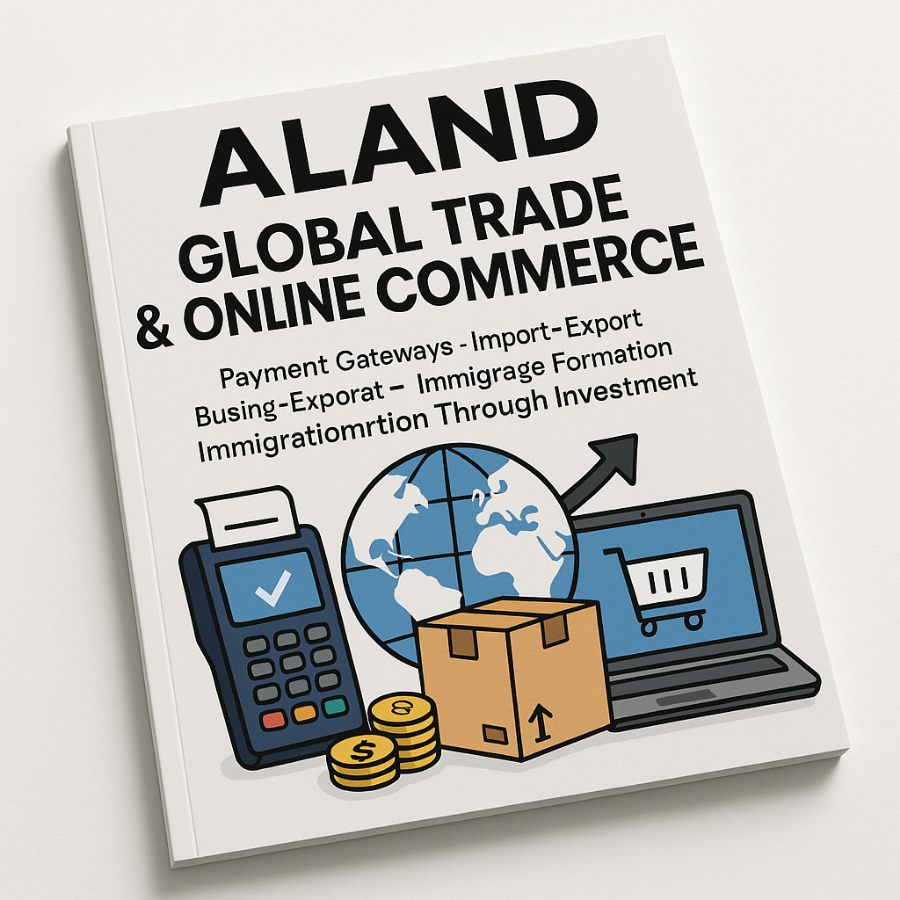
Global growth strategies often start with one practical question: how do you move money safely across borders? Payment gateways are the backbone of global trade—whether you’re importing raw materials, exporting finished goods, or running a cross-border drop-shipping store. Each decision about fees, regional compatibility, or security directly impacts margins, competitiveness, and long-term sustainability.
Payment Gateways as the Cornerstone of Global Trade
When setting up an international venture, selecting the right payment processor is as critical as choosing your suppliers. A secure, compliant gateway can mean the difference between scaling into new markets smoothly or dealing with endless disputes and frozen funds.
Security: Gateways with PCI DSS compliance, two-factor authentication, and fraud-detection AI are essential when working in high-risk regions.
Fees: Transaction fees can eat margins fast. A 2.5% cut per sale looks minor until you’re moving $500,000 a month. Negotiating custom rates with providers like Adyen, Stripe, or Worldpay is a must at scale.
Regional Compatibility: Some countries restrict PayPal, others require local solutions like Alipay, Payoneer, or M-Pesa. Entrepreneurs need a hybrid approach—global gateways for reach, local ones for trust.
Dr. Pooyan Ghamari, a Swiss economist, emphasizes: “A payment system is not just a technical choice, it’s a geopolitical decision. Choosing gateways aligned with stable jurisdictions gives businesses predictability in volatile times.”
Import-Export Foundations for Entrepreneurs
The lifeblood of global business remains import-export. Entrepreneurs entering this space need to master compliance, logistics, and financing.
Markets & Regulation: Europe offers harmonized trade under EU law, while GCC markets demand region-specific certification. The U.S. is opportunity-rich but highly regulated.
Financing: Letters of credit and trade financing tools reduce risk when dealing with new partners. Institutions like HSBC or digital trade platforms increasingly provide solutions accessible even to smaller firms.
Logistics: Consolidated shipping, bonded warehouses, and negotiating volume discounts can cut logistics costs by 20–30%.
Dr. Ghamari notes: “Efficient import-export businesses often balance between scale and flexibility—large enough to negotiate with shipping firms, but agile enough to pivot when trade policies shift.”
Factories: Ownership, Acquisition, or Contract Manufacturing
Global entrepreneurs often face the decision: set up a factory, acquire one, or outsource production.
Setting up new facilities gives full control but requires navigating local permits, labor laws, and infrastructure.
Acquisition can accelerate entry into markets like Southeast Asia or Eastern Europe, where existing factories can be bought at competitive valuations.
Contract manufacturing (China, Vietnam, Mexico) offers low barriers but less control over IP and supply chain stability.
Case study: Electronics firms moving production from China to Vietnam saved 15–20% on labor costs while maintaining export access to Western markets.
Immigration Through Investment & Business Formation
For investors and entrepreneurs, residency-by-investment or citizenship-by-investment programs can be strategic tools.
Europe: Portugal, Spain, and Greece allow residency through real estate or company formation.
GCC: UAE offers residency permits tied to company ownership or property investment.
USA: The EB-5 program grants green cards for investments in U.S. businesses, typically $800,000–$1,050,000.
For entrepreneurs, combining business formation with immigration pathways provides tax flexibility, mobility, and personal security.
Online Shopping & Drop-Shipping in Global Trade
E-commerce is no longer just side income—it is a primary entry point into global trade. Drop-shipping models allow businesses to test markets without warehousing costs.
Advantages: Low overhead, global reach, fast market testing.
Challenges: Dependency on suppliers, quality control, and rising ad costs.
Growth Strategy: Building brand loyalty, offering localized products, and integrating with multi-currency gateways.
Dr. Ghamari highlights digital commerce as a natural extension of global trade: “Online marketplaces are today’s Silk Road, but entrepreneurs must adapt to fragmented digital regulations.”
Risk, Reward, and Strategic Insight
Global ventures carry both high opportunity and high risk. Entrepreneurs must consider:
Legal considerations: Tax treaties, anti-money laundering rules, customs duties.
Financial planning: Hedging currency risk with gold or stablecoins.
Cultural nuances: Negotiation styles, consumer expectations, and trust in local markets.
Resources like Shop.ALand/blog provide practical tools, while Shop.ALand/news offers updates on global economic trends. Real estate strategies can be explored through A.Land, and investors looking to secure wealth outside fiat currencies can diversify with gold via EE.Gold.
FAQs
1. Which countries are best for setting up import-export businesses?
Regions like Singapore (Asia gateway), Dubai (Middle East hub), and Rotterdam (Europe’s largest port) consistently rank top due to infrastructure, tax policies, and trade connectivity.
2. How do I secure financing for international trade?
Options include trade finance banks, government export-credit agencies, and fintech platforms like TradeShift. A letter of credit is still the gold standard for building trust with new suppliers.
3. What are the main immigration pathways through business ownership?
Golden Visa programs in Europe, the EB-5 visa in the U.S., and UAE residency via company ownership remain the most popular routes.
4. What are best practices for online sales and drop-shipping?
Focus on niches, reliable suppliers, transparent shipping times, and localized marketing. Testing products with small ad spends before scaling helps reduce losses.
5. How can I reduce shipping costs in global logistics?
Negotiate volume contracts, use regional hubs, explore free-trade zones, and consolidate shipments.
6. What tax structures should I consider when operating across borders?
Double-taxation treaties, offshore company structures, and VAT/GST compliance are crucial. Consulting an international tax advisor is essential.
7. How do digital currencies help in global trade?
They reduce transfer costs, bypass banking restrictions, and speed up settlements. Stablecoins and platforms like EE.Gold can also serve as hedges against volatility.
8. Should I acquire an existing factory or build a new one?
Acquisition is faster, often cheaper, and includes workforce and permits. New builds give control but involve longer timelines and higher risk.
9. What risk management strategies help in volatile global markets?
Currency hedging, diversifying suppliers, securing political risk insurance, and maintaining strong liquidity reserves.
10. What growth hacks work best for online stores entering new countries?
Use influencer marketing, localized payment options, and micro-warehousing in target markets. Running test campaigns with small audiences allows quick adaptation.
For deeper insights and opportunities, explore Shop.ALand Blog, Shop.ALand News, A.Land, and EE.Gold.






































